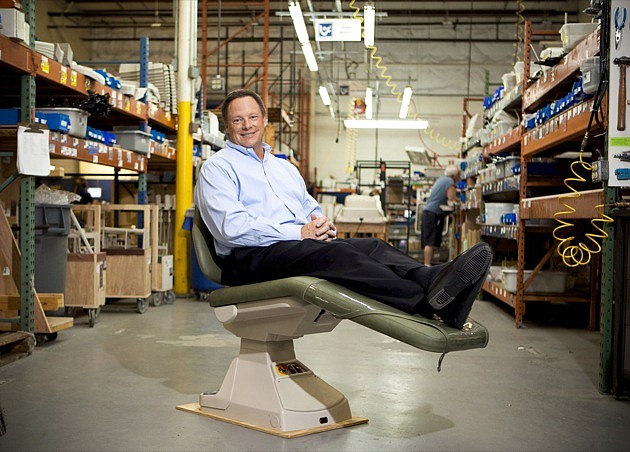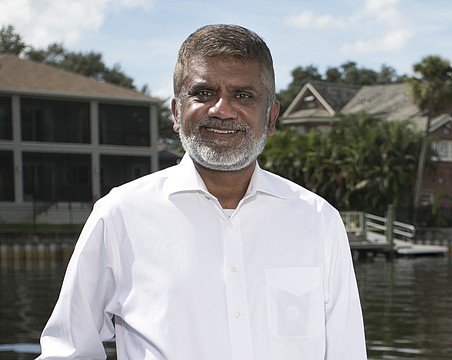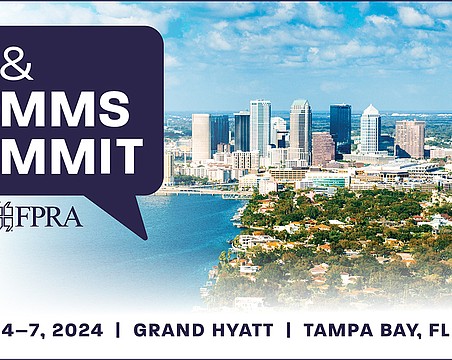REVIEW SUMMARY
Company. Boyd Industries Inc.
Industry. Dentist chair manufacturing
Key. Adjusting processes, not prices
By the Numbers. Click here.
Bruce Livingston married his way into a career he didn't expect in his younger years, back when getting braces was part of growing up. Now his company, Boyd Industries Inc., is likely to be a familiar brand to anyone who was ever subjected to having those dreadful metal bands and wires attached to their teeth.
The Clearwater-based company, which manufactures chairs and related furnishings for orthodontists and other medical specialists, has gone through some adjustments of its own. Even though Boyd still leads the specialized dentist chair market, competitors are always trying to offer something cheaper but not necessarily as good.
“We realized the complete concept package is the only way to go,” says Livingston, whose 63,000-square-foot facility at 12900 44th St. N. also makes additional furnishings ranging from surgical tables to video game cabinets. Cutting prices “got old very quickly,” he adds, so the emphasis is now on maintaining quality and operating more efficiently.
Boyd, whose logo is based on the company's original “contour” chairs, can design and produce a custom chair for as little as $2,000 with furnishings going up in price depending on the type of materials and finishes requested. Its showroom combines the familiar trappings of a typical visit to a dentist's office with the kinds of swatches normally associated with interior decorating.
Saving dentists' backs
The business itself has been in progression mode from the time William Gray Boyd founded it in 1957 in St. Petersburg. Boyd started out making custom interior furnishings for local homes, including many belonging to dentists.
When some of those dentists complained to Boyd about constantly working in a bent-over position, he began developing chairs that allowed patients to recline comfortably as the dentist used a rolling bench to sit upright while scraping or drilling. Production became so successful that Boyd no longer needed to focus on homes, offering completely outfitted dental suites for as little as $1,698.
Boyd died in 1969 and left the company to his two daughters, who in turn sold it to its general manager, Bill Sharpe, two years later. After Livingston married Sharpe's daughter, Deidra, the couple joined the company in 1985 as president and vice president. Sharpe then sold Boyd to Livingston in 1987.
While Sharpe had a government procurement background, his son-in-law was more of a sales-and-marketing guy. “He made some great products. He just didn't tell anybody about them,” Livingston says.
Boyd has since grown from a handful of employees and roughly $1 million in sales to 60 personnel with average annual revenue of $12 million.
Leading a limited base
Making chairs and related items for orthodontists and oral or maxillofacial surgeons is a specialized business, with only 15,000 such practices nationwide. Even as demand and technology for improving smiles improved over the last few decades, the number of related equipment manufacturers has shrunk.
“We were well positioned to step into the vacuum and kind of won by default,” says Livingston, whose company obtained a $2.2 million Industrial Revenue Bond from Pinellas County in 1997 to buy and equip its current complex in Clearwater and relocate from several buildings at a Largo industrial park. The 5.5-acre site allows space for future expansion.
While orthodontists count as the majority of Boyd's current customers, Livingston emphasizes that it also makes equipment for other non-oral specialists, such as hair transplant specialists and doctors addressing head and neck injuries. “We can't stay in the mainstream because we'll get our faces kicked in,” he says.
Even though Boyd's revenue declined last year, Livingston believes demand for his company's products will sustain or increase in years to come. The biggest challenge, he says, is convincing orthodontists at trade shows not to stick with the aging equipment they have now because of the recession.
“We've been able to upgrade features without raising prices,” he says, pointing to self-closing drawers as an example. Boyd has also developed video gaming stations for younger patients, providing an arcade-type experience in waiting rooms.
Quality above price
As for competitors at trade shows who claim they offer the same items as Boyd for up to half the price, Livingston simply invites prospects to compare the two closely to determine their real value and quality. He says Boyd had an interesting problem in its early years, at which time its chairs were priced so low that dentists often asked what was wrong with them.
Automation has also kept Boyd's manufacturing costs down. Livingston says he attempts to add machinery for cutting wood or metal pieces each year, such as a used cutter he happened upon at a boat show in Fort Lauderdale. Computers are also used to design and control those saws.
“Anything we can draw, we can cut. That's fairly sophisticated for a company our size,” he says. He has also picked up other lean manufacturing techniques from Boyd's own vendors, including a visit to the Kentucky plant of a Danish company that makes the motors for its patient chairs.
Rather than simply counting on the discretionary spending of its customers' patients, Livingston says Boyd is looking to grow through acquisition of similar companies, and is also considering expanding distribution to Europe. “We've already got the lion's share, so we can't take much more,” he says of domestic distribution.
More importantly, he says Boyd needs to keep up with the changing demands of its biggest client base. “Orthodontists want to be seen as progressive,” he says. “It's a very competitive business.”
Not just kid stuff anymore
While orthodontics are often associated with teens reluctantly submitting to wear awkward appliances on their teeth, the market for better-looking grills now extends well beyond high school.
The adult market for braces has expanded greatly between generations, from only 5% of patients in the 1990s to as much as 30% today, according to various reports. Flexible spending plans in employee healthcare packages and improved tooth-straightening techniques such as Invisalign are keys to that boom, along with the overall trend toward professionals wanting to look their best at any cost.
Bruce Livingston, president of Clearwater-based Boyd Industries Inc., faced his own such reality in his mid-30s while marketing his company's specialty chairs to orthodontists. One such prospective customer at a trade show even stopped him in the middle of a sales pitch to admonish him about the condition of his mouth.
“He told me if I'm working in the dental industry, I need to have nice teeth,” he recalls. “In hindsight, I appreciate him telling me that!”
While adult teeth may be easier to fix than those of youngsters, Livingston says hidden braces or nighttime retainers aren't always the answer. For more complicated dental problems, the tried-and-true bands and brackets are still the way to go, he says.
In any case, it opens a new avenue for Boyd's clients who specialize in straightening both young and older teeth. Probably a good thing its chairs are full length.






